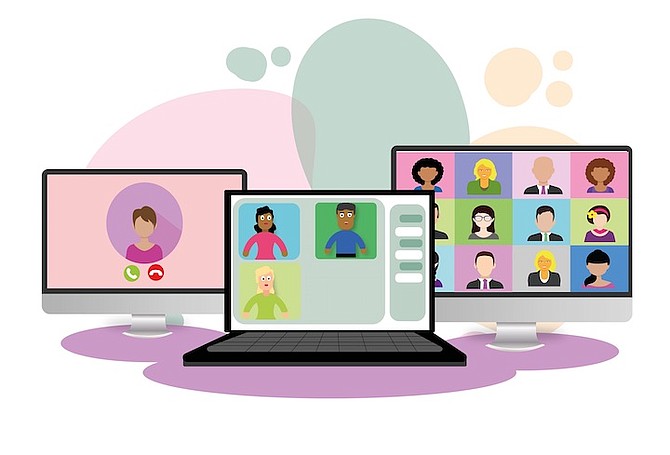THIS week, I joined two working groups on separate thematic areas, and these groups are meant to produce reports within a short time period. The groups were initially formed three weeks ago, but individuals were being added at random throughout this period. With no information about the way the groups were functioning, I was sent links to join them on a specific platform. Both groups are large, each with more than 100 members. Once I joined, I spent about an hour in each group, just reading earlier communication, all in chat format. One was much easier to make sense of than the other because there was an agreed upon structure that the members followed, and that structure was also reiterated regularly.
The first group seemed to decide on a spokesperson, to attend the in-person event and present the report, with ease. It also had a rapporteur who developed a simple form through which they receive inputs from the members. Everyone could access and download the draft, and then use the short form to submit recommendations. A poll was taken to determine the most convenient day and time, and a Zoom meeting has been scheduled to be held two days after the deadline for inputs, and the final document is to be sent on the deadline. It is easy to see who the active participants are, and they all began their engagement with short introductions. The group also developed an internal document on its operation which makes it easy for newcomers to orient themselves and become active participants.
In the other group, there was more passive aggression and ego than progress. One person dominated the space, often shutting other people down. I saw numerous strong recommendations that this person dismissed. Anyone viewing the chat without context would have thought that person was the group leader, though a terrible one. Several people asked, on more than one occasion, for a meeting to discuss the priorities of the group and the potential for working in smaller groups. The bad “leader” insisted there was no need to meet because they have been through this process in previous years, and all anyone else needs to do is give recommendations. They shared a PDF with their own recommendations and called on others to send their own to be added. Noticeably and predictably, participation in the chat decreased and that PDF, badly written by one person without group input, became the draft. Calls for a shared document were ignored, and the group is largely inactive.
It is not difficult to see the root causes of the issues with the second working group, especially when compared with the progress being made by the first group. One of the biggest failures of the organisation that brought these groups together is the lack of moderation and the expectation that these large groups could be “self-managed” when there are people from different countries, a language barrier, and competing priorities. A set of guidelines would have been incredibly helpful, but instead, the groups are racing against a deadline without knowing exactly what they are meant to produce.
Large groups are difficult to manage, and it is ideal for them to be able to function independently. For that to happen, there has to be high-level coordination — not micromanagement — and an appropriate workspace (which can be virtual). Here are a few practices that can help large groups to function:
1 Make time for introductions. When there are more tasks ahead than it seems time will allow for, it is tempting to dive right in. Everyone wants to get to work, make the submission, and move on. It becomes difficult, however, to work with people without knowing who they are, what they do, and how they can contribute to the work. It is important to take some time to learn a bit about each other. More and more, employers are using personality tests and work style assessments to help teams to understand each other and work together better. This is not often feasible for short-term projects, due to time constraints and the associated costs, but we can use what we already know. Name and designation are great to know, but short bios are even better for giving some context to each person’s work. It is also helpful to know why people are a part of the process and what they think they are bringing to the table.
It is just as important to know how people normally work and the methods of communication and collaboration they prefer. Some people are happy to do the research and share documents with the team. Others want to be able to brainstorm in a small group. Some think it is important for the entire group to meet on a regular basis to exchange ideas and make decisions at critical points. Some people prefer to work via email while others want to use productivity tools and project management platforms. All of this information can be shared at the start if people are invited to introduce themselves with their names, designations, reasons for being in the room, relevant strengths or contributions they expect to make, and their work style. The facilitator can offer questions or prompts to help team members to share this information, and someone should take notes that can help with forming smaller teams and setting methods of work.
2 Set guidelines for interaction. People need to know how to interact and to be clear on the expectations. How many people are in the group? Will the group, at some point, be divided into small groups? Will there be leads on particular segments? Have they already been identified, or will that decision be made by the group? How much time will be spent in meetings and how much of it will be set aside for independent work? When are the break times? Are there people in other time zones who may need additional allowances? Is the expectation that cameras be turned on during meetings? How does the use of cameras affect internet connectivity? Will decisions be made by consensus or majority vote? How will disagreements be handled? The more questions are answered before issues arise, the easier it will be to prevent and to resolve issues.
3 Divide the work into segments. Especially for large teams, it is helpful to divide tasks into more manageable work streams so that smaller, more specialized teams can work on them. If, for example, the team needs to produce a document, small teams can each focus on one drafting one section or chapter. This, of course, does not prevent the larger team from working together to determine the format, sources of information, and general position of the document before forming small teams.
4 Identify useful roles. Some teams are able to manage themselves and share duties, but this is more difficult to do in larger numbers. There is also the issue of more vocal people dominating the space and assuming positions of leadership. Based on the information shared in the introductions, teams can determine who is best-suited for specific roles, and people can self-nominate. These roles may include rapporteuring and internal communications. There is always a need for notetaking, and there has to be a person on the team who can send emails to everyone and schedule meetings. It is also often helpful to have a designated person to handle conflict resolution. That way, people know who to privately message if a situation arises, and that person should have some tools for de-escalating and resolving conflict.
5 Set milestones. The final deadline is good to have, but a project timeline with deadlines along the way, with milestones and deliverables, ensures that progress is steady. It also creates the opportunity for teams to celebrate small wins, check in with each other, and make necessary adjustments as they move toward the next key point on the timeline.
6 Determine the best ways to contribute. Every platform is not good for every activity or type of group. A group may use Zoom for meetings, Google Docs for collaborative work on a draft, Dropbox for file-sharing, and Asana for task management. Another group may have one powerful productivity tool that can handle all of it. Some groups function well using email only. It depends on what needs to get done and who is working together. Beyond the tools, it is also important to discuss the way people want to work together. How can someone give feedback? How late are people willing to work? What is the blackout time for instant messaging? What if someone wants to share an idea that is a better fit for a different small group? Figure it out before getting started with the tasks, and prevent time loss during the work period.
7 Agree on a meeting schedule. One of the most frustrating things is trying to schedule a meeting with a group of busy people, especially when it is short notice. In many cases, it is best to set a standing meeting, whether it is weekly, biweekly, or monthly, just so that there is something on the calendar and people have the opportunity to share ideas, give and receive feedback, report on progress, and determine next steps together.






Comments
Use the comment form below to begin a discussion about this content.
Sign in to comment
Or login with:
OpenID